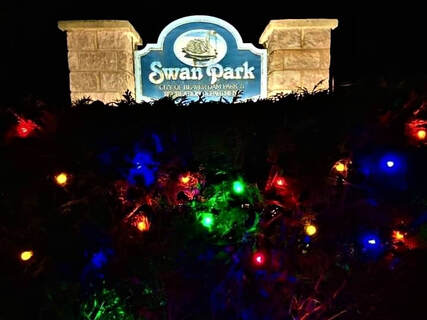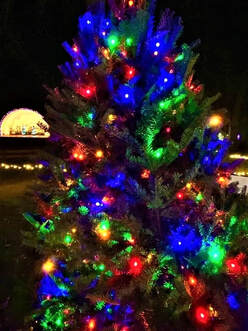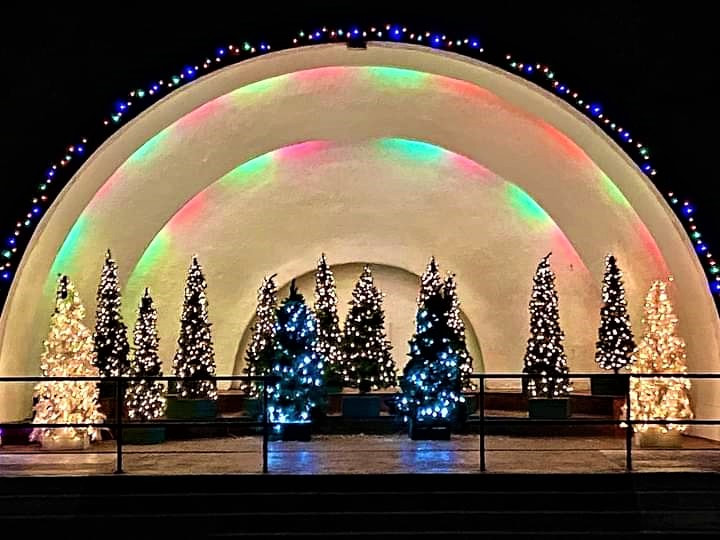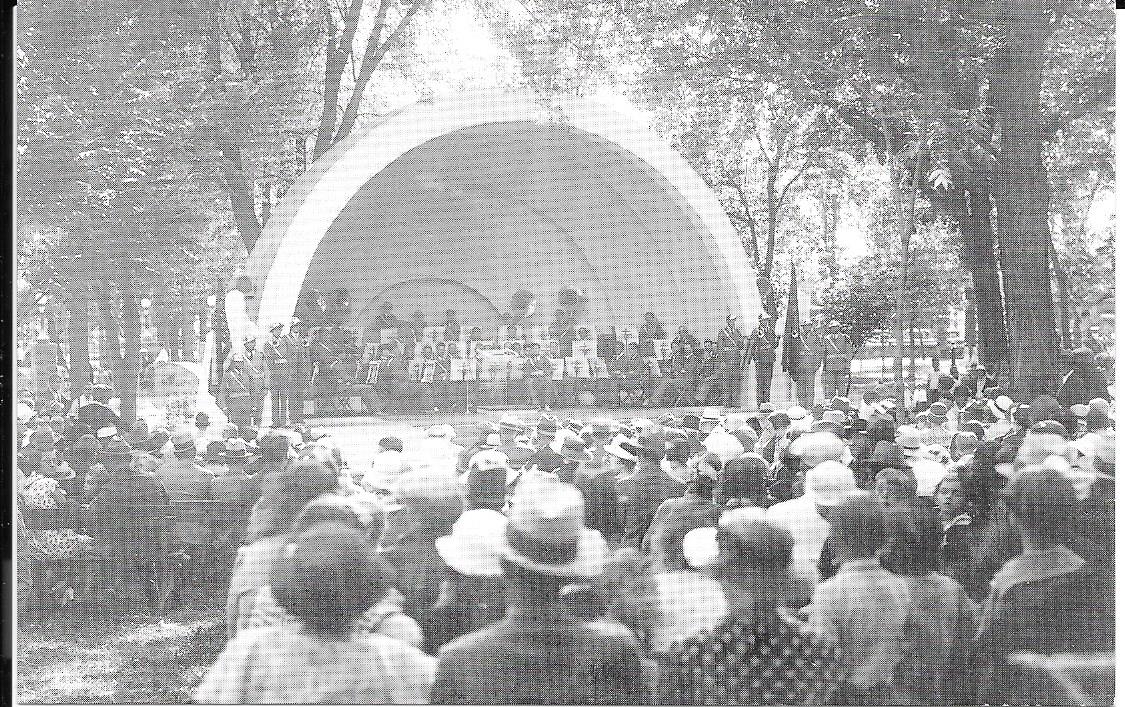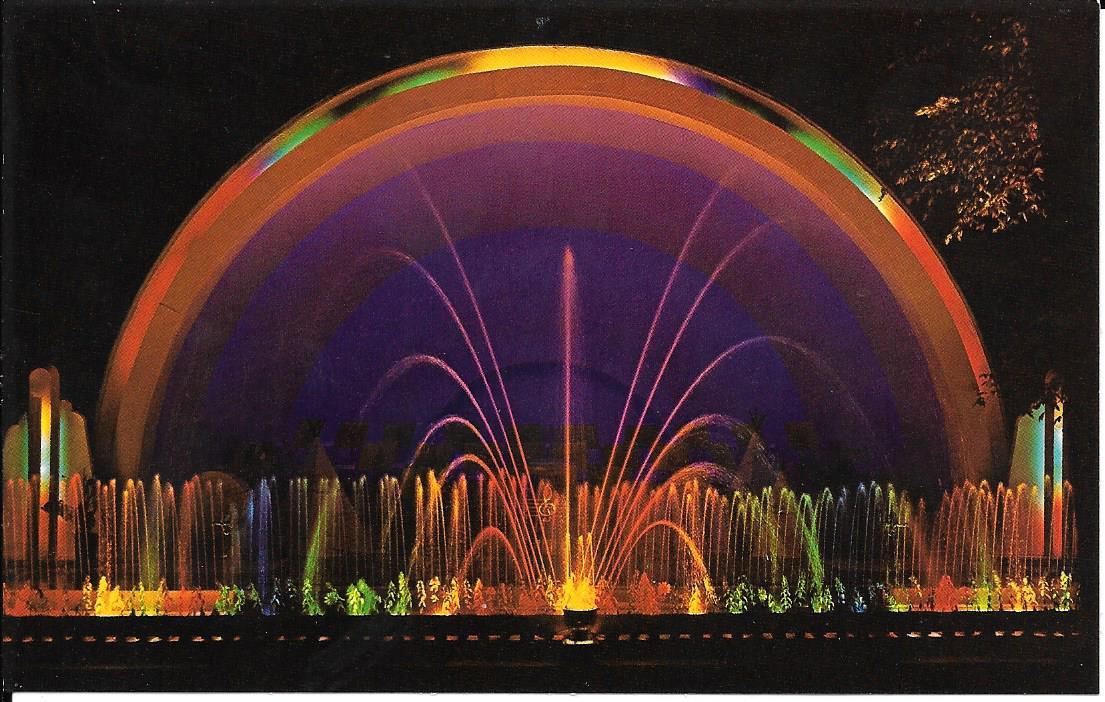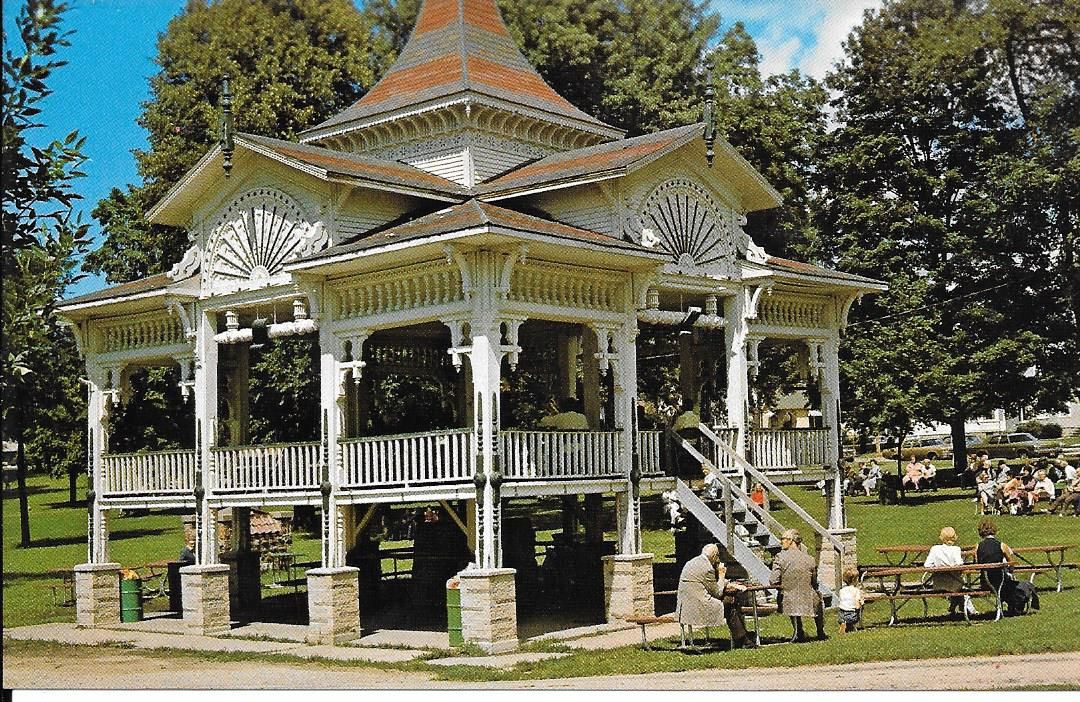Beaver Dam
Swan Park Bandshell
TIS THE SEASON - December 2021 AT SWAN PARK
Photos courtesy of Mike Throndsen; lighting provided by Beaver Dam Rotary
Photos courtesy of Mike Throndsen; lighting provided by Beaver Dam Rotary
|
The dome-shaped bandshell located in the center of Swan Park was dedicated at the Harvest Festival on Sunday evening, August 26, 1934. The program included the American Legion Band with W. J. Harder, Director, in Part I and with various trios, solos, bands, and orchestras in Part II. Orrin Hofferbert, president of the Beaver Dam Park Improvement Committee and a chief electrical engineer at Monarch Range Company designed the bandshell which was modeled after the both the Swift and the Ford Bandshells at the Century Progress in Chicago. Permanent wooden benches provide seating for the audience. Mr. Hofferbert also created a multicolored light and water show at the front of the stage area. "Light streams like fireworks from a fountain in a lagoon, tumbles from a six foot waterfall, or rises in sheets with the water curtain of the band shell at a never ending series of musical events...." written by Richard C. Kienitz of the Milwaukee Journal, Sunday, September 23, 1956. Photos at the Dodge County Historical Society show acts that performed over time included elephants on the stage, trapeze artists, trampoline acts, and Native American acts. By the mid 1970s, the fountain and lights ended because the equipment had become obsolete. Today, free regular concerts are held on Wednesday evenings with attendance ranging from 100 to 400. A schedule can be found on the Beaver Dam Community Band's Facebook page. |
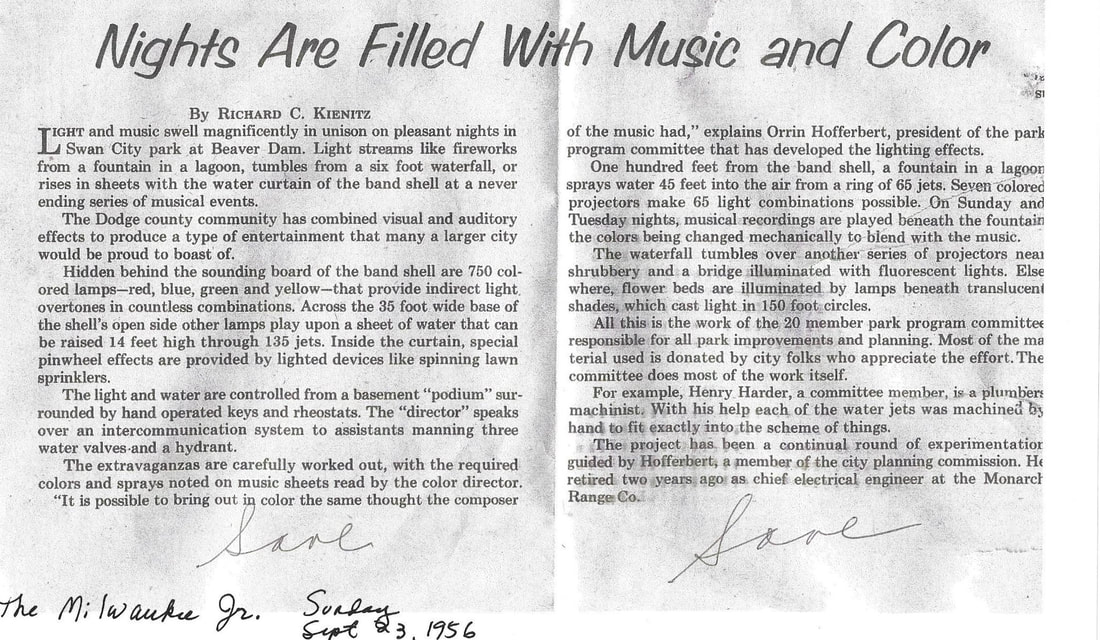
OTHER HISTORICAL FEATURES AT SWAN PARK
|
Swan Park was originally known in 1881 as Vita Park. A spa hotel and cottage were built on the grounds by Dr. G. E. Swan. People traveled yearly from as far away as New Orleans to drink the water from Vita Mineral Spring and to bathe in it also. At a small ornate bandstand, concerts featuring the local Harder's Band were held. In 1905, the City of Beaver Dam purchased the property for $15,000. After much contention about it, voters approved of the purchase. By 1915, the Park was restored. The spring was capped and closed in the early 1930s. In April, 1980, the pavilion was placed on the National Register of Historical Places. The Vita Spring Pavilion along with Dr. Swan's home is found on the National Register of Historic Places. Much more information can be found at the Wisconsin Academy Review, Volume 22, No. 1, December 1975.
|
Location |
